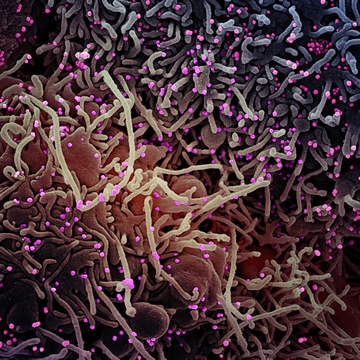Climate Change Won’t Stop for the Coronavirus Pandemic
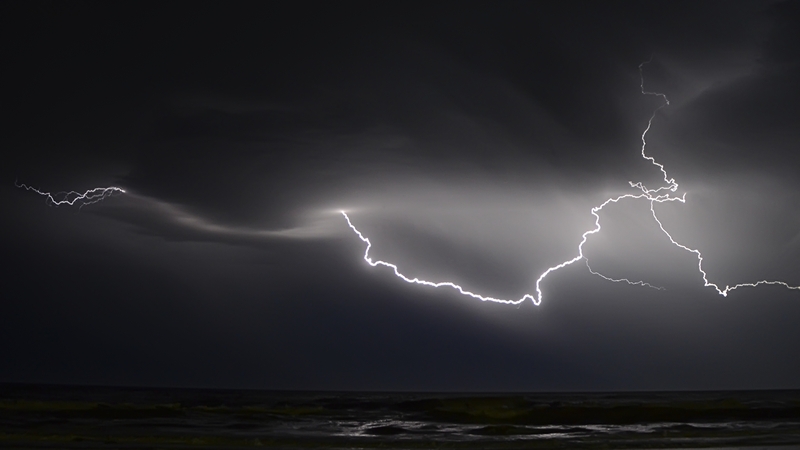
Just a few years ago, Hurricane Maria ripped open homes across the southern Puerto Rican city of Ponce, destroying the rickety electrical grid and sending thousands of people into shelters or onto the streets. People were still rebuilding when another devastating earthquake jolted the island’s southern coast. Afraid of collapsing walls and showering concrete, people moved back outdoors, where they still spend cool, wet nights under blue tarps strung to poles and tied to cars packed with coolers and lawn chairs.
Now thousands brace for a wave of illness as the COVID-19 pandemic spreads insidiously across the island, threatening people without homes, without water, some struggling even to maintain basic hygiene. It’s the latest blow in a diabolical cascade of crises, striking Puerto Ricans at their most vulnerable. When the sickness comes, doctors and nurses will be scarce; the hurricane forced almost half of them to leave the island in search of jobs.
“Everyone is in hell,” said Abel Vale, a retired environmental consultant who lives north of Ponce, “or left forgotten.”
This is how cascading catastrophes can compound in effect, kicked off or made worse by climate change, which promises to amplify the harm and make even unrelated crises more painful.
And it may well portend what comes next for the rest of the United States.
The flooding, hurricanes and wildfires that now regularly arrive in the U.S. each spring and summer, after all, are not on hold because we also face a health crisis. Changes in the climate have made the chance of a natural disaster striking during this pandemic significantly more likely, and its likely impact more severe. Today, hurricanes are larger, and more intense than ever. Fires are spreading faster and further amid drought, their total size having doubled in recent years. Meanwhile, precipitation across the Midwest — which suffered devastating floods last spring — has increased by more than 45% since the 1950s.
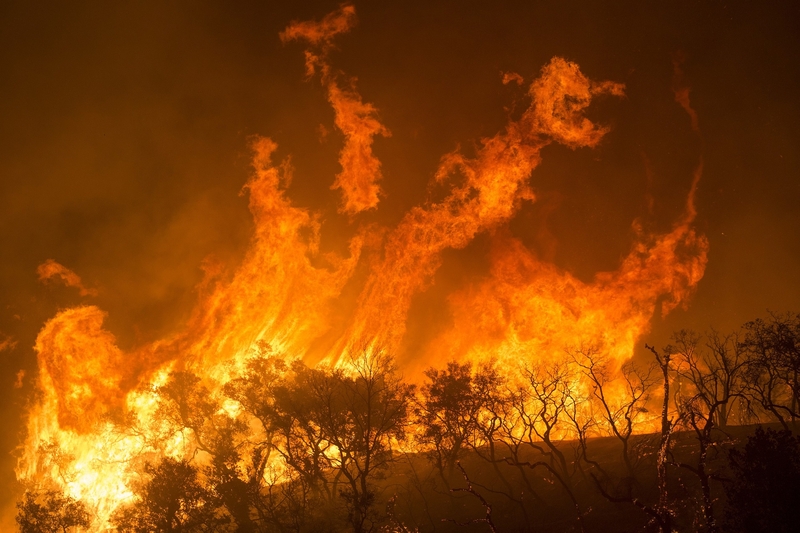
“Climate change is loading the weather dice against us,” said Katharine Hayhoe, a professor of public policy and law at Texas Tech University and one of the world’s foremost climate scientists. “We always have the chance of rolling a double six.”
When we do, disasters that might have otherwise proved manageable will compound and amplify COVID’s effects until the hurt — measured in lives, livelihoods and property damage — winds up worse than it might have been from any one disaster alone. Storms, floods and fires will greet a crippled nation, its people sequestered inside homes, its workforce locked down, unable to procure even basic emergency and building supplies. The authorities tasked with responding to it will already be consumed by other emergencies, their capacity to provide even the most fundamental aid limited, their budgets gutted.
Scientists — as well as national security experts and U.S. defense officials — have long warned that climate crisis would act as “a threat amplifier,” exacerbating everything from terrorist attacks to immigration. And yet there’s been little serious quantification or consideration of what these amplifications might look like. In 2017, the U.S. National Climate Assessment warned that scientists and officials often fail to capture what the report called “compound extremes” and anticipated that the impact of several disastrous events unfolding in rapid sequence would catch the nation by surprise.
Now, as a pandemic rifles through the lives of Americans, killing thousands each week, we’re looking down the barrel of hurricane season, which begins in less than two months. Gulf of Mexico waters are running unusually warm, setting up conditions for strong storms, and the researchers at Colorado State University predict there is a 69% chance that a major hurricane will make landfall in the U.S. this summer or fall.
The public health responses required to manage the pandemic run directly against what will need to be done to respond to such a hurricane. Large numbers of people may need to flee on short notice and be housed in shelters that are overcrowded, understaffed and undersupplied. In 2017 in Florida Hurricane Irma still forced some 191,000 people into crowded arenas and other shelters.
If that happens again, how will people maintain physical distancing? Will states still send evacuees into shelters? Will National Guard troops permit them to cross state boundaries? It’s easy to see how flight from the threat of nature could lead to a resurgence of contagion, starting a whole new wave of infections spreading across the country. “To say that we are not prepared for these concurrent disasters is putting it mildly,” said Irwin Redlener, a clinical professor of health policy at Columbia University’s Earth Institute and a leading expert in public health ramifications of catastrophic events. “I’m extremely worried.”
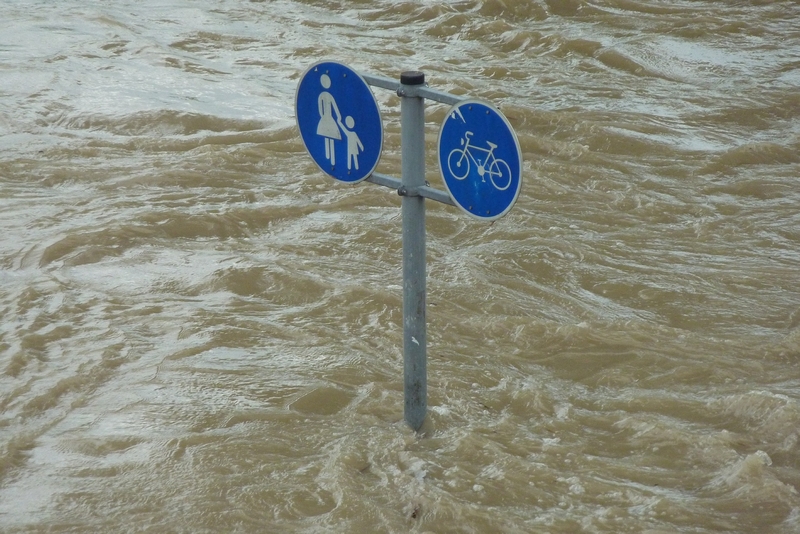
Those are the social costs. But the economic toll would also be compounded. Risk Management Solutions is one of the world’s largest risk modeling companies, focused on calculating the odds and costs of climate-related risk and other disasters for the insurance and finance industries and for governments around the world. For the first time, it has come up with a measure of what the compounded effect of cascading disasters might mean — at least economically. If a major hurricane makes landfall in Florida this summer, while COVID-19 social distancing measures remain in place and the pandemic rages on, RMS models forecast that the damages and recovery might cost as much as 20% more to clean up than usual. That could translate to tens of billions of dollars. The scale of impact would likely be similar for other types of disasters RMS has yet to analyze.
The models don’t predict how many more lives may be lost, but the issues of cost and health risk are intertwined. Insurers depend on speed of response to mitigate the cost of repairing homes after a big storm. The winds blow a roof off and contractors race to replace it before rain can rot out the walls and seep into the foundation. But what happens when plywood and other materials are unavailable? What happens when contractors are in COVID isolation and can’t work? The rains come, the houses rot, the costs rise, the people who are displaced remain grouped with family or in shelters and other vulnerable settings, exposed to the risk of the virus for longer. They miss work, or can’t get new jobs, spiraling into deeper financial hardship.
“It’s one plus one equals three,” saids Robert Muir-Wood, the chief research officer for science and technology at RMS.
Planning and proactive funding could avert the worst overlaps. Redlener suggests that states in climate-disaster-prone regions immediately excuse their disaster officials from day-to-day pandemic response and have them revisit their preparedness plans for concurrent hurricanes and wildfires in the context of what’s now unfolding across the country. Another RMS researcher suggested that states could revise their disaster plans to use thousands of vacant hotel rooms instead of large group shelters. But it’s not clear that states have either the forethought or the bandwidth to make such adjustments.
Florida’s State Emergency Operations Center wrote in response to emailed questions that the state is guided by its 240-page Comprehensive Emergency Management Plan, which is “designed to be flexible, adaptable and scalable.” Officials pointed to clauses in that plan that direct the state to consider and protect public health during the response to a disaster, to “maintain situational awareness,” and to, for example, “support sheltering of people with medical” needs. It contemplates the importance of paying close attention to “surge” needs, by ensuring that adequate medical staff and supplies are available. It even acknowledges that in some cases evacuation increases health risks to patients, stating that evacuation will only take place when the risk of staying in place is greater than the risk involved in evacuating.
But the document offers no specific plan for how to do those things, and does not appear to consider when the health-affected population includes all people, rather than a subset of patients. Much of what the plan suggests we already know from the past few weeks to be impractical in the face of the current pandemic. Was Florida suggesting, for example, that considering health risks, it would forego evacuations entirely in the face of a major hurricane this year, and if so, what would that mean for people’s physical safety?
The state wouldn’t say. It declined to answer those and other specific questions.
The first tests for the country could begin even sooner than hurricane season. After last spring proved to be the wettest on record in the Missouri River basin, more than a million acres of farmland were flooded and 14 million people were affected in what amounted to some of the worst flooding in the history of the middle part of the country, stretching from South Dakota and Iowa down to Nebraska and Oklahoma.

This spring could be nearly as bad. According to the National Oceanic and Atmospheric Administration’s spring flood outlook, two-thirds of the continental United States faces elevated flood risk next month, with 25 states poised for “major or moderate” flooding. Along the Missouri, this winter set a new record for water saturation and soil moisture — a predictor of how much water the ground can absorb before it floods — signals that last year’s disaster could well repeat.
The Plains states have until now been spared the worst of the COVID-19 outbreak, yet there are signs that the virus is spreading quickly into the heartland, and that peak infection, coupled with hospitalizations and death rates, could come weeks later than for the rest of the country, coinciding with the flooding and the forcing of people from their homes in late April and early May.
Next, of course, is fire season, which promises to return to the American West this August after a dry winter. California has received just 64% of its normal rainfall, meaning bone-dry hillsides and dehydrated vegetation will likely be waiting for the intense offshore, fire-driving winds that arrive like clockwork each fall.
A difficult fire season will demand thousands of firefighters, but current infection rates among firefighters and other first responders suggest that as many as 10% of some departments won’t be available to respond. In California, firefighting training, brush reduction efforts and the prescribed burns critical to reducing fire risk have all been delayed this spring. Exchanges of firefighting teams between states, and between countries, will be hampered, and many of the agencies tasked with coordinating fire response — the U.S. Department of Agriculture and the Federal Emergency Management Agency among them — are also consumed with the COVID-19 response. The crews that travel to fight fires often crowd into vehicles and sleep in makeshift camps — ideal conditions for the transmission of disease, unless officials decide to drastically cut down on efforts to put out the flames.
Even in regions that don’t burn, air quality will decline, putting sensitive people at greater respiratory health risk. And if last year’s blackouts are repeated, the power may be shut off in some areas to avoid sparking wires, killing internet access in the process. How can the sixth largest economy in the world recover from economic depression spurred by the pandemic when millions of people working from home lose power, grinding their work, as well as online schooling, to a standstill?
Once again, ProPublica found little evidence that such scenarios were being planned for. A spokesperson for the California State Department of Public Health, which manages disaster response, replied to questions with an email stating simply that “we’re not speculating on the overlap of coronavirus and wildfires.” And a spokesperson for the Governor’s Office of Emergency Services did not respond to a detailed list of questions about how the state’s plans could address cascading crises.
Trafficking in worst-case scenarios can seem like alarmist business, but people like Columbia’s Redlener say it would be irresponsible not to consider it. The price tag for economic relief is already more than $2.2 trillion. How much money is the federal government going to be able to expend to help large populations meet even their basic living expenses if they are unemployed in large numbers because of the pandemic and then lose everything they have left to a natural disaster?
“It sets us up for a level of misery that no living American has experienced — even during the Great Depression,” Redlener said. “There is no real equivalent to what I am worried about in terms of multiple large scale disasters in a country that is ill prepared.”
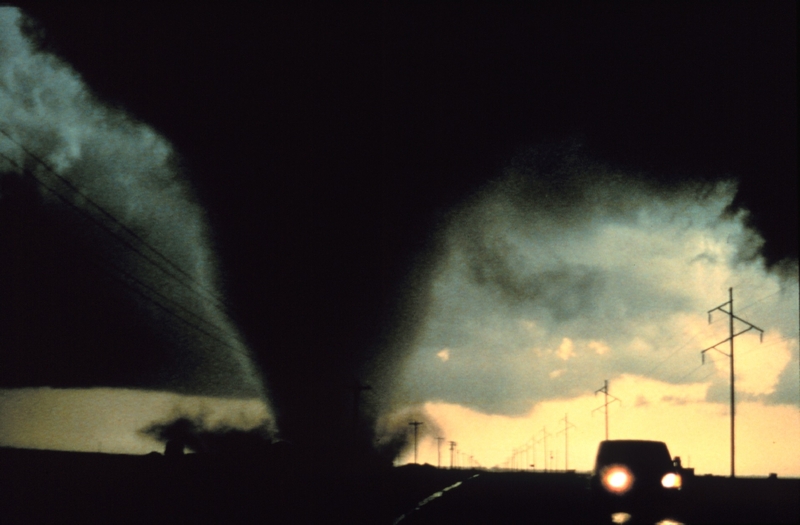
The last bulwark against this level of failure — the nation’s first responder — is supposed to be FEMA, which offers top-level management for major crises and approves emergency response if it’s going to be paid for with federal aid. Yet FEMA is already stretched thin by its lead position on the unprecedented pandemic response, and it has been notoriously ineffective in the past when called on to fight on multiple fronts. In 2017, for example, FEMA struggled to manage Hurricane Harvey in Houston, followed a few weeks later by Hurricanes Irma and Maria, and then five of the most destructive wildfires in California’s history. Today, many places in Puerto Rico are still waiting for paperwork to be approved and aid promised by the agency more than 24 months ago to arrive.
ProPublica sent FEMA a list of questions, including a request for its plan to deal with a multi-front disaster. We asked whether the agency or its leadership had ever been briefed on the potential ways a pandemic could multiply its other tasks, including climate-related disasters.
The agency declined to answer specific questions but stated, in its email response, “Even as FEMA is focused on responding to COVID-19, we are also preparing and maintaining the Agency’s readiness for other disasters to include spring flooding, severe weather, and the upcoming hurricane season.” In the email, a spokesperson said the agency was “evaluating” how its staffing needs might change, and preparing for a “surge capacity” in Homeland Security personnel that it relied on after Superstorm Sandy.
Those who know the agency best are skeptical, though, that it can handle what may be asked of it over the course of the next 12 months.
“Emergency response is a disaster, and we don’t learn from every experience,” said Judith Enck, who was the EPA’s regional administrator handling its response to Sandy in 2012, and whose region also included Puerto Rico. By design, FEMA is a reactive agency, unable to anticipate and fend off a crisis. Add to that, Enck said, that FEMA lacks the funding and the expertise. It parachutes into regions with little local knowledge and relies on its ability to quickly hire platoons of temporary employees — staff who during a pandemic are unlikely to be available. “I don’t think that model makes any sense any more.”
Puerto Ricans, of course, already know this. They’ve lost faith in their territorial government and in the current federal administration. They have come to accept living with frail health and civic infrastructure, and to rely on a culture of resilience, and nonprofit aid, over the uncoordinated and corrupt gestures of government. And while Puerto Rican politics may be unique within the country, they have a message other Americans must absorb: There is no cavalry.
“The lesson is, help isn’t coming” said Frances Colon, a former deputy science and technology advisor to the U.S. secretary of state, who now runs an environmental policy consultancy in Miami and works in part with Puerto Rican development. “We learned we cannot put our faith in the federal government.”

